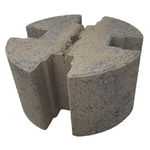The best protection from a cold frame is digging them into the ground and locating them effectively. Limited Southern exposure to keep temps more even can be an important piece of the puzzle. Both the ground and sun exposure are important to successful overwintering. I would not enclose your set up completely--you will get heat gain and early budding and growth doing that. You may also get rodent issues, as you're creating a really nice sheltered place for mice, voles, etc. to set up shop. I also wouldn't double duty the set up with anything. Composting in the same location, IMO, could lead to some issues with winter dormant fungus etc.
FWIW, My cold frame is more of a cold pit--a seven by five (all the room I really have) two foot deep rectangle dug from the ground, with two foot tall timber frame walls from the surface around the pit. That's four feet of earth and wood walls in total. The earth is your friend in winter. Setting a cold frame on top of it doesn't really take full advantage of the relative warmth the mass of groundsoil can provide.
In late Nov. I put trees on the bottom of the pit--with bricks under the pots' feet to give some drainage clearance. I then mulch in for the first foot or so. I allow that to get hit with repeated freezes and hopefully some snow for a week or two. I then cover the pit with a lean-to roof of decking surface boards with the coverage facing South and the open end facing north towards my house.




